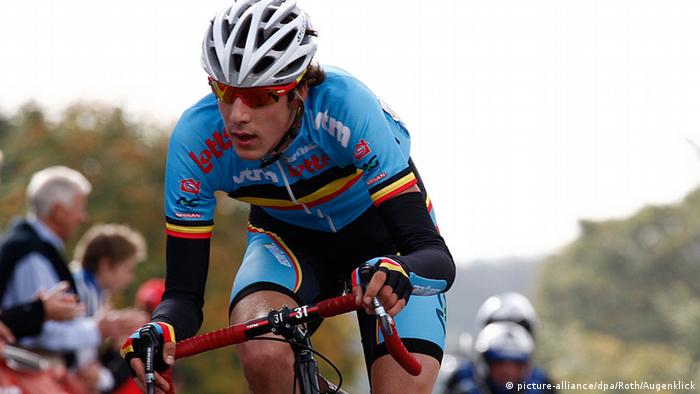Hello nad and All, http://www.dw.com/...t-attacks/a-43321799 
Excerpts:
"The list of professional cyclists to have died of heart attacks in recent years is surprisingly long:
• In 2004, Belgian Stive Vermaut died at the age of 28 following a heart attack he suffered during a training session. In the 2000 season, he rode alongside Lance Armstrong with the US Postal team.
• Also in 2004, Belgian cross specialist Tim Pauwels died after the 23-year-old suffered cardiac arrest during a minor race in Erpe-Mere, Belgium.
• In 2005, Alessio Galletti fell off his bike in the Spanish race Subida al Naranco and did not get up. The 37-year-old Italian, who rode for the Naturino-Sapore di Mare team, had also succumbed to cardiac arrest.
• In 2009, 21-year-old Frederiek Nolf of the Topsport Vlaanderen-Mercator team died in his sleep one night during the Qatar Tour. According to media reports from the time, all of the evidence pointed to the Belgian having suffered a heart attack, however his parents declined an autopsy.
• In 2010, Luxembourg's Kim Kirchen, then 39, suffered cardiac arrest, was placed into an artificial coma, however he survived the incident. The former T-mobile Team rider subsequently ended his racing career.
• In 2012, Rob Goris died of a heart attack in a hotel at the age of 30. Like Goolaerts, the Belgian competed for the Veranda-sponsored team.
• In 2016, 21-year-old Dutch rider Gijs Verdick of Cyclingteam Jo Piels suffered two heart attacks during an under-23 tour in Poland and was placed into an artificial coma. Verdick was brought from Poland to Zwolle in the Netherlands, where he passed away a day after his arrival.
• Also in 2016, the Belgian Daan Myngheer (Team Roubaix Lille Métropole) suffered a heart attack and died during the first stage of the Criterium International, a two-day race in France. He had complained of discomfort during the race and collapsed after seeking medical attention. Myngheer was just 22 years old.

The late Belgian rider Daan Myngheer
• Just over a year ago, Egyptian cyclist Eslam Nasser Zaki died during the African Continental Track Cycling Championships in South Africa. The 22-year-old fell off his bike on the track in Durban. It was later determined that he too had suffered a heart attack.
This series of heart attacks in professional cycling raises an important question: How can so many highly trained athletes die of heart attacks despite being young, healthy and under regular medical supervision? "
"Doping, or heart damage caused by endurance sports?
The first possibility that comes to mind regarding such deaths in professional cycling is doping. In the past, there has been plenty of speculation about the affects of blood doping on the heart. During the heyday of Epo doping around the turn of the millennium, cyclists spent their nights walking through hotel corridors to get their blood – thickened by the abundance of red blood cells – moving for fear of thrombosis or heart attack. Both riders and team members have confirmed this in statements. According to a study by the French magazine
Nouvel Observateur, the mortality rate among Tour de France competitors is almost three times higher than that of the general population. However, to automatically conclude that heart attacks in cyclists are linked to doping would not be accurate.
This is because there are other possible and just as likely causes: Extreme endurance sports like professional cycling can change or damage the heart. In 2012, Dr. James O'Keefe published a study in the American medical journal
Mayo Clinic Proceedings that showed that endurance sports often lead to a permanent overstretching of the heart muscle, and this puts an excessive strain on the heart. With just 40 marathon runners, triathletes and cyclists, involved in the study, the sample size was quite limited. However, scarring was detected in the right chamber of the hearts of five athletes."
Cheers, Neal
+1 mph Faster


